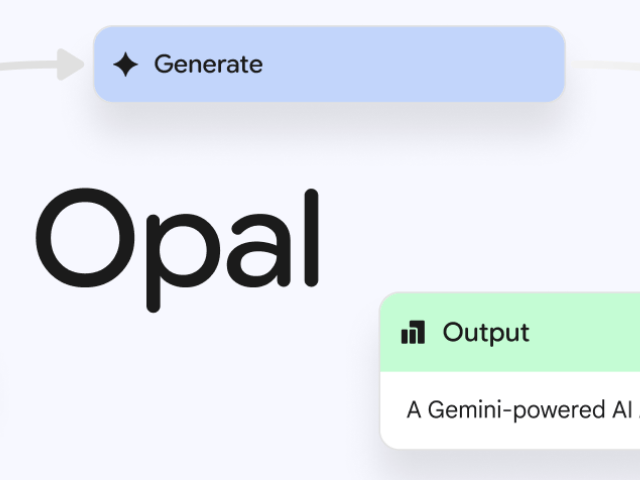In a new experiment that seems to anticipate the direction of creative computing, Google has introduced Opal, a tool that allows users to build small AI-driven applications using only natural language. No programming knowledge is required. No installation needed. You just describe what you want to achieve, and the system does the rest.
Opal is available in public beta — currently only in the United States — and is part of the Google Labs experimentation program. Its concept is simple yet ambitious: turn written ideas into functional workflows powered by AI. From generating product descriptions to sending automated emails or creating images, everything can be organized into an app that runs directly in the browser.
💡 How do you build an app without coding?
Opal works on a very familiar idea for anyone who has used language models like ChatGPT or Gemini: writing a prompt. The difference is that this prompt is transformed into a visual structure — a chain of steps representing inputs, processes, and outputs that make up an app.
For example, if you ask “create a name generator for design companies,” Opal not only returns suggestions — it builds a reusable flow you can run anytime. It also offers a visual interface to edit, rearrange, or enhance each step.
For those who prefer not to start from scratch, Opal includes a gallery of templates ready to be customized. Just duplicate an app, modify the text or components, and share it like any Google document.
🧩 An interface for the present, a language for the future
What sets Opal apart isn’t just that it’s code-free — it’s how it combines visual editing with conversational language. Instead of dragging components manually, you can just type: “Add a step that translates this into English” or “Show the result in a table.” The AI understands and updates the flow in real time.
This aligns with what some in the industry call “vibe-coding” — a way of building software based more on intention than syntax. Rather than coding line by line, you converse with the system to shape what it does. The idea comes first — not the technical process.
🔭 How far can it go?
Like any experiment, Opal has limitations. It’s not designed to build complex commercial applications or replace full development frameworks. Users can’t access the underlying source code, and its availability is geographically limited.
Also, as with many of Google’s recent tools, Opal appears to be backed by models from the Gemini family, offering powerful language understanding and generation — although Google hasn’t disclosed the exact versions used.
The launch of Opal is another sign of where the tech industry is heading: making software creation more accessible, assisted, and collaborative. Tools like Opal are redefining how we build — and proving you don’t need code to make something useful.
#GoogleOpal #NoCode #AI #VibeCoding #Innovation #AItools #NoCodeDevelopment #LowCodeNoCode #Gemini
https://www.techrepublic.com/article/news-google-opal-no-code-ai-app-builder
